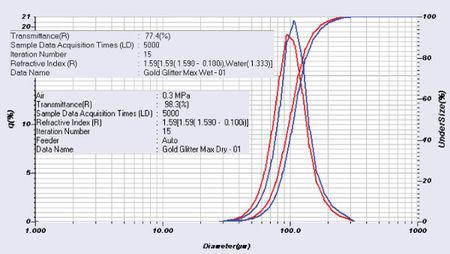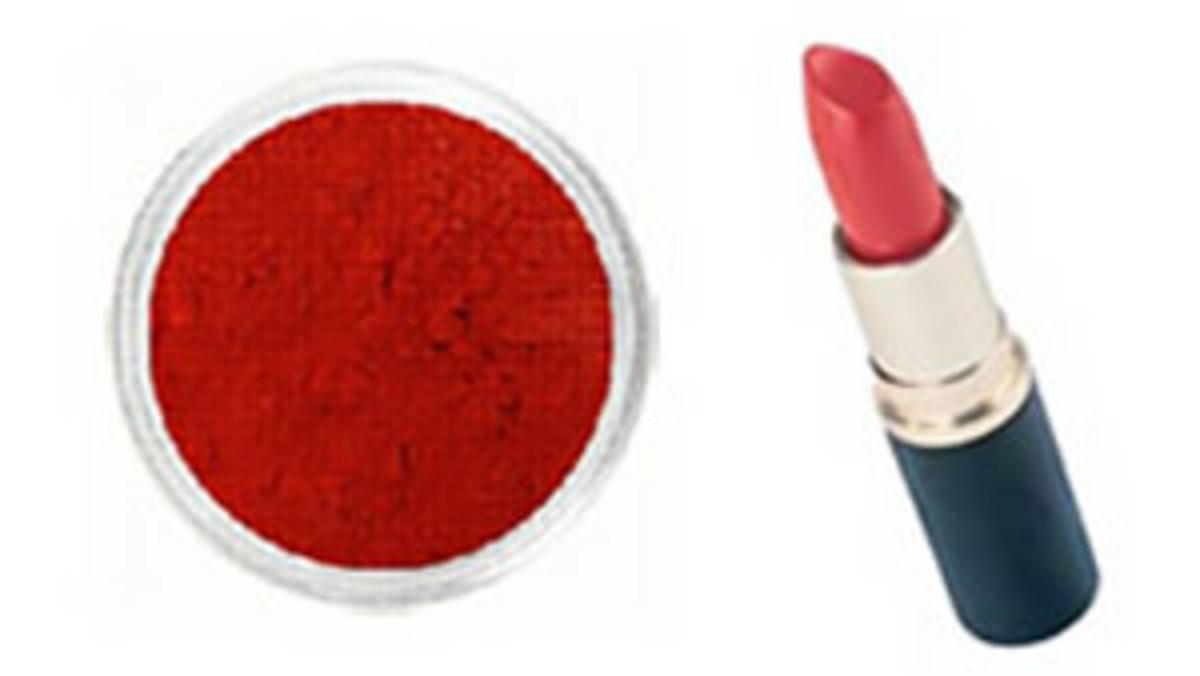

Many cosmetic products include particulate material or emulsions. Some examples of cosmetic products consisting of or including particulates include facial powders, moisturizers, and lipstick.
By definition, any cosmetic product including powders includes particulate material and could require control and measurement of the particle size distribution. Foundation provides full coverage while finishing powders can help set the foundation and provide additional specific appearances by reflecting light in flattering colors or diffusing light evenly over the surface of the skin. Face powders may include talc, kaolin, iron oxide, zinc oxide, titanium dioxide. In addition to appearance enhancement, face powders can also provide sunscreen protection with the inclusion of strong light scattering components such as zinc oxide. The particle size distribution of these components effects appearance, stability, and sunscreen protection.

Wet (red) vs. dry (blue) analysis of gold glitter powder measured on the LA-960.
Moisturizers are applied to the skin to improve hydration, protect from drying, and improve appearances. Most moisturizers are oil in water emulsions with additives to improve stability or provide additional benefits such as sun screening properties. Formulating oil in water emulsions often requires knowledge of both the size distribution of the dispersed phase (oil) and the charge on the surface of the droplets (the zeta potential).
The droplet size distribution can be analyzed on several HORIBA products such as the LA-960V2 or SZ-100V2 (for microemulsions). The SZ-100 can measure both the size and the zeta potential, making it an excellent research tool for emulsion formulators.
The selection of pigments used for lipstick plays an important role in the final appearance. Many pigments used in lipstick are particulate including effect pigments that add silk or pearlescent attributes. Smaller particles create satin and silky effects while larger particle sizes create high luster effects such as sparkle. Pearlescent pigments also add a shine to the appearance of the lipstick.
In the cosmetics industry, it is said that beautiful skin is mildly acidic. Actually, healthy skin has a pH of around 5.5, which is, in fact, slightly acidic. Skin care products should naturally, then, have the same low acidity. As the leading manufacturer of pH meters, HORIBA has developed an array of pH meters since its founding. In pursuit of greater ease of use, our latest model is equipped with a large color LCD panel and a function to navigate operational procedures.
레이저 산란 입자 크기 분포 분석기
나노입자 분석기
HORIBA제품의 자세한 정보를 원하시면, 아래의 양식에 내용을 입력을 부탁드립니다.



